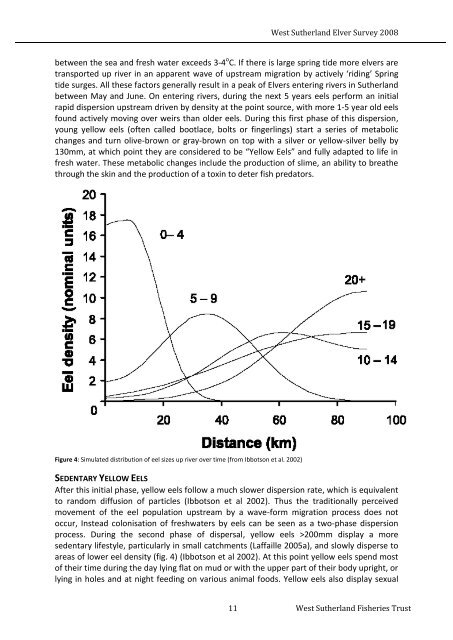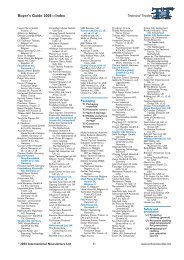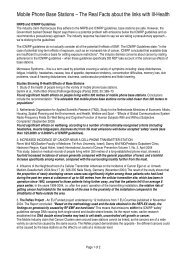West Sutherland Elver Survey
West Sutherland Elver Survey
West Sutherland Elver Survey
You also want an ePaper? Increase the reach of your titles
YUMPU automatically turns print PDFs into web optimized ePapers that Google loves.
<strong>West</strong> <strong>Sutherland</strong> <strong>Elver</strong> <strong>Survey</strong> 2008<br />
between the sea and fresh water exceeds 3-4 o C. If there is large spring tide more elvers are<br />
transported up river in an apparent wave of upstream migration by actively ‘riding’ Spring<br />
tide surges. All these factors generally result in a peak of <strong>Elver</strong>s entering rivers in <strong>Sutherland</strong><br />
between May and June. On entering rivers, during the next 5 years eels perform an initial<br />
rapid dispersion upstream driven by density at the point source, with more 1-5 year old eels<br />
found actively moving over weirs than older eels. During this first phase of this dispersion,<br />
young yellow eels (often called bootlace, bolts or fingerlings) start a series of metabolic<br />
changes and turn olive-brown or gray-brown on top with a silver or yellow-silver belly by<br />
130mm, at which point they are considered to be “Yellow Eels” and fully adapted to life in<br />
fresh water. These metabolic changes include the production of slime, an ability to breathe<br />
through the skin and the production of a toxin to deter fish predators.<br />
Figure 4: Simulated distribution of eel sizes up river over time (from Ibbotson et al. 2002)<br />
SEDENTARY YELLOW EELS<br />
After this initial phase, yellow eels follow a much slower dispersion rate, which is equivalent<br />
to random diffusion of particles (Ibbotson et al 2002). Thus the traditionally perceived<br />
movement of the eel population upstream by a wave-form migration process does not<br />
occur, Instead colonisation of freshwaters by eels can be seen as a two-phase dispersion<br />
process. During the second phase of dispersal, yellow eels >200mm display a more<br />
sedentary lifestyle, particularly in small catchments (Laffaille 2005a), and slowly disperse to<br />
areas of lower eel density (fig. 4) (Ibbotson et al 2002). At this point yellow eels spend most<br />
of their time during the day lying flat on mud or with the upper part of their body upright, or<br />
lying in holes and at night feeding on various animal foods. Yellow eels also display sexual<br />
11 <strong>West</strong> <strong>Sutherland</strong> Fisheries Trust











